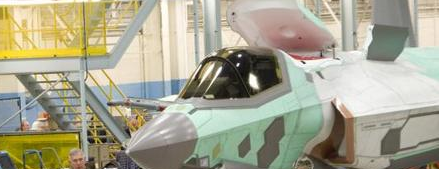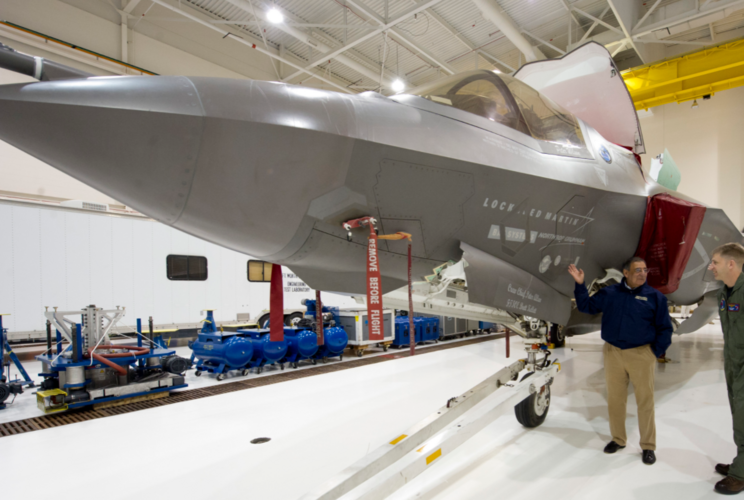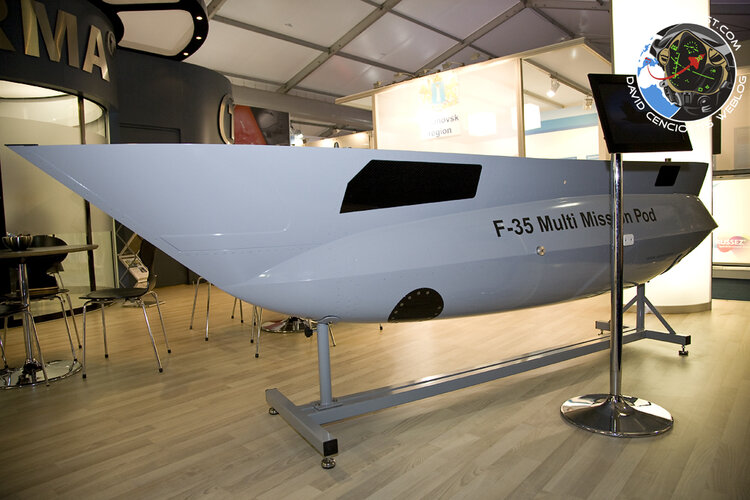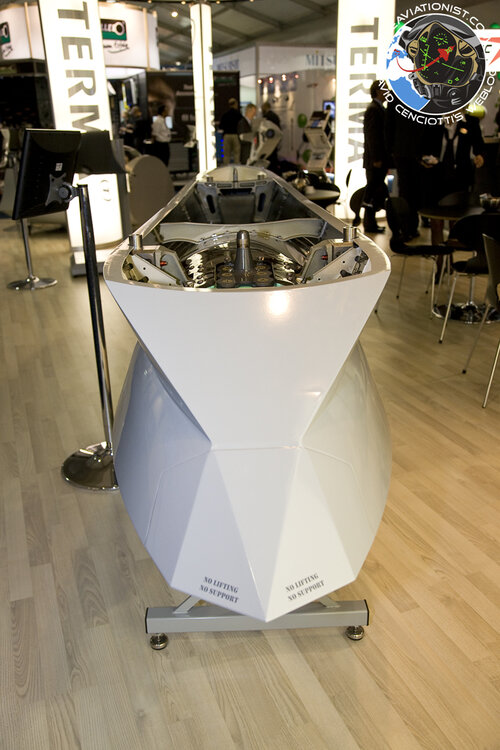Alternate JSF Engine Thrust Beats Target
Aug 16, 2010
By Guy Norris
Los Angeles
The intense battle over powering the F-35 Joint Strike Fighter could be heading to new levels following test results that show the General Electric/Rolls-Royce F136 alternate engine has more than 15% thrust margin against specification, significantly exceeding the power of the baseline Pratt & Whitney F135.
The tests at the U.S. Air Force’s Arnold Engineering Development Center (AEDC) in Tullahoma, Tenn., are the first to officially calibrate the combat-rated thrust of a production-representative F136 at sea level conditions. Although the test program is only a matter of days old, it already appears to be showing greater performance margin in afterburner than expected, says the General Electric Rolls-Royce Fighter Engine Team.
News of the tests reaches Congress as it heads toward a showdown with Defense Secretary Robert Gates, who has made killing the second engine a centerpiece of his crusade to cut unnecessary defense spending. With the Obama administration promising to veto any defense bill that prolongs the F136, the House has defied Gates and passed provisions that fund the engine. The Senate has not weighed in, but key committee chairmen have voiced support for competitive engines. Details of the F136’s test performance could strengthen support and more broadly undermine Gates’s efforts to reform the Pentagon (see p. 20).
“Initial results show we have more than 15% margin at sea level combat-rated thrust than the specification. That’s significantly beyond the thrust requirement right out of the chute,” says GE-Rolls. In March this year, following the first maximum afterburner test of a system development and demonstration engine, the team quietly expressed confidence the F136 would exceed the thrust of the baseline F135 by 5%. Actual thrust achieved in the test remains undisclosed, but it is in excess of 40,000 lb.
Pratt & Whitney, which derived its F135 from the F-22 Raptor’s F119 engine, remains confident its own growth plans will stave off the challenge from the F136 without getting ahead of the need or increasing development costs. The company, which begins final qualification tests of the short-takeoff-and-vertical-landing (Stovl) engine in Florida this month, plans to start tests of a higher-thrust F135 in January 2011 and begin rig tests of a growth fan later next year.
Although the F135’s thrust meets specification for the Lockheed Martin F-35 as currently configured, future growth potential is becoming an important part of the ongoing alternate engine debate. Thrust growth, and the engine life and maintenance cost benefits if traded for lower operating temperatures, are recognized as key factors by both sides. Thrust growth is considered particularly important for the performance of the F-35B Stovl variant, while the ability to use additional temperature margin to cut long-term support costs is applicable to all models, including the conventional-takeoff variants.
Given the added margin, GE-Rolls says its baseline F136 will be able to achieve a 5% thrust growth through a simple digital engine control “throttle push,” without eating into what it says could be a 25% maintenance-cost advantage over the F135. Russ Sparks, GE Aviation vice president for military strategy, says the reduced costs are directly related to the lower turbine operating temperatures in the engine, which was resized with a larger core and higher-flow fan in 2005, when Lockheed Martin increased the airflow capacity of the F-35 inlets to 400 lb./sec. The F136 fan was enlarged to pump up to 380 lb./sec., and the AEDC tests are being conducted within the airflow limits of the JSF inlets.
Pratt & Whitney Military Engines President Warren Boley says growth testing is part of a medium- to long-term strategy to increase F135 thrust by as much as 20%. “There is no doubt Pratt & Whitney has the suite of technology, and we are dedicated to do that,” he says. Although initial growth is aimed at satisfying F-35 thrust requirements, Boley says more power will also accommodate future applications on other platforms—including unmanned aircraft.
The first growth step, starting with tests in January, is based on digital engine control and turbine airfoil changes. These will provide 5-10% thrust growth and could be applicable for F-35s in production Lots 6, 7 and 8, “if needed,” Boley says. The changes could also form the basis of an engine upgrade that would be retrofitable at a depot level, he adds.
Beyond this, Pratt & Whitney’s advanced program team is studying more fundamental changes to the basic cycle of the F135 that could enhance performance and provide more growth potential. The initiative would introduce adaptive technology for the core and fan similar to that being developed by Rolls and GE under the U.S. Air Force-led Adaptive Versatile Engine Technology (Advent) research program. Although Pratt & Whitney was not selected to work major elements of Advent, it has continued to refine the technology it originally proposed for the competition.
“We are looking at a third fan stream that would take advantage of a gear,” says Boley, adding that this would “bring geared turbofan technology to the front end of the F135.” Studies for the growth engine, dubbed F135 plus, include looking at a “classic bigger fan.” The current focus is on whether it would be better to combine a larger fan with an adaptive core, or make both the core and fan adaptive.
GE’s Sparks contends that “maintaining the engine flow path is the key to affordable growth. We don’t need to make it bigger, or make the fan flow more air, to give our engine more thrust. A 5% growth will be achieved with the current F136 hardware, and we’re far enough into performance testing to verify that component efficiency is equal to or better than predicted. That’s the basis for retaining the margin in terms of fan speed and temperature.”
To boost thrust by 10%, the team plans to import technology being developed under the Air Force’s Versatile Affordable Advanced Turbine Engine program. “We’re talking things like better cooling and more [ceramic matrix composites], and we’ll do it all without making any airflow changes through the engine,” he says. Ceramic matrix composites are used in the first stage of the F136 low-pressure turbine and would be used for other stages in the higher-thrust version, says the engine team.

















